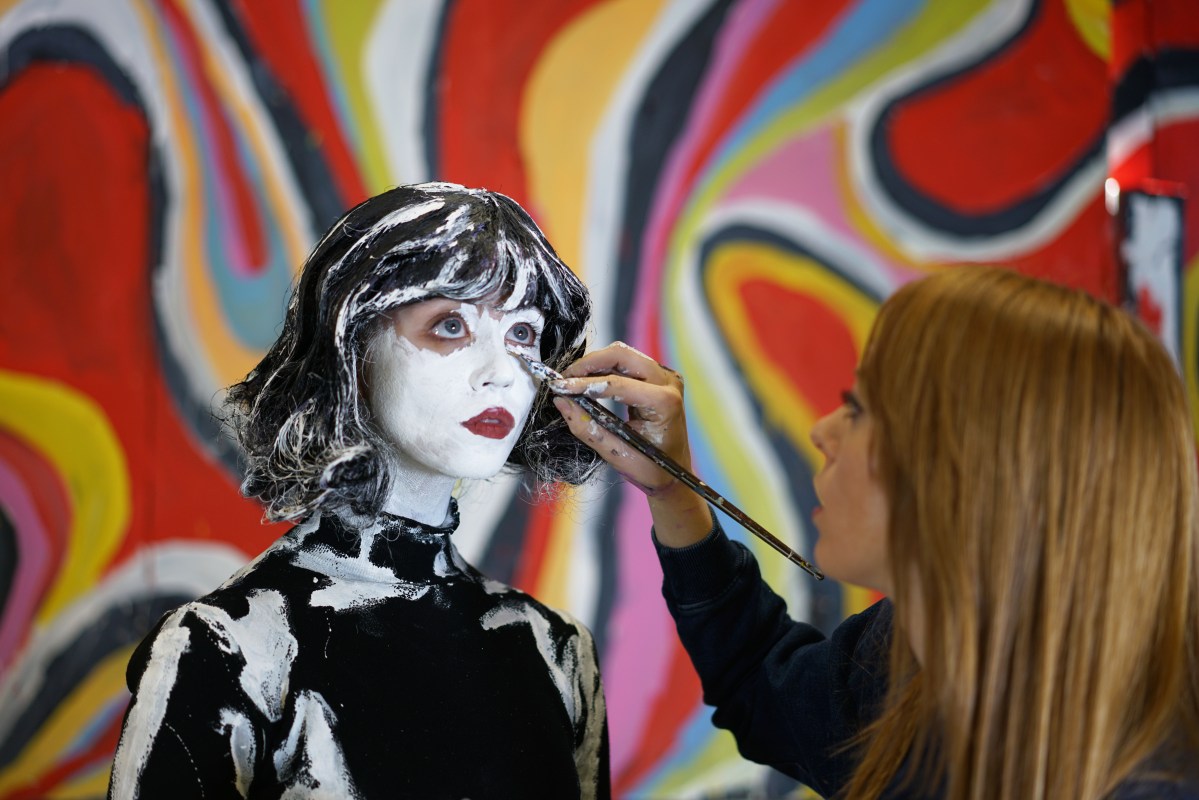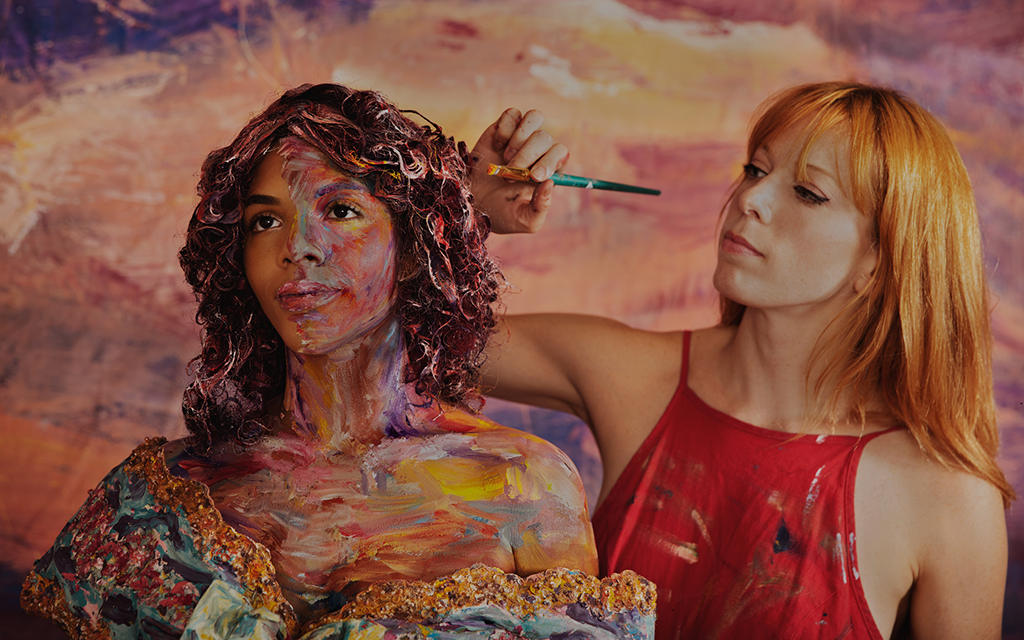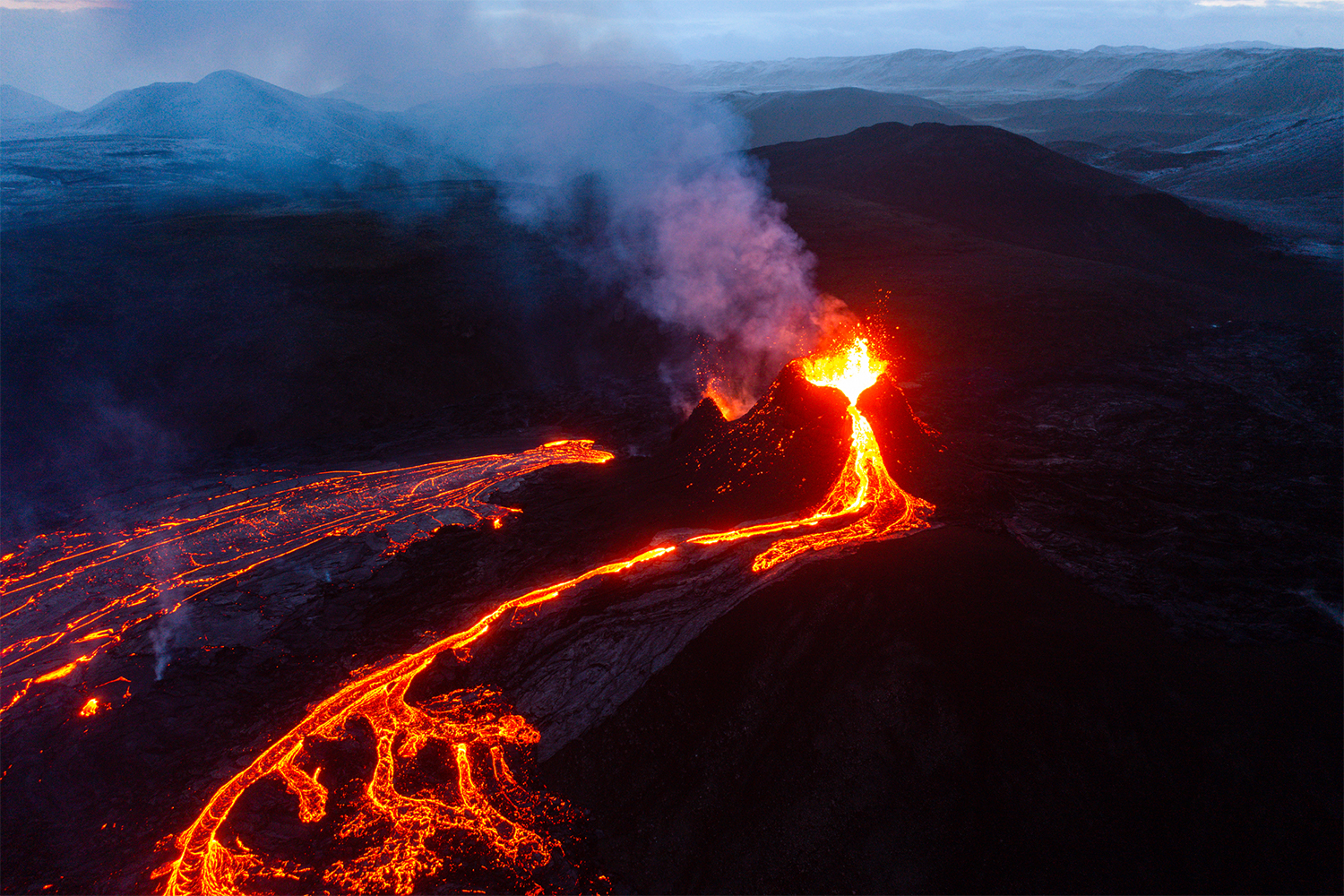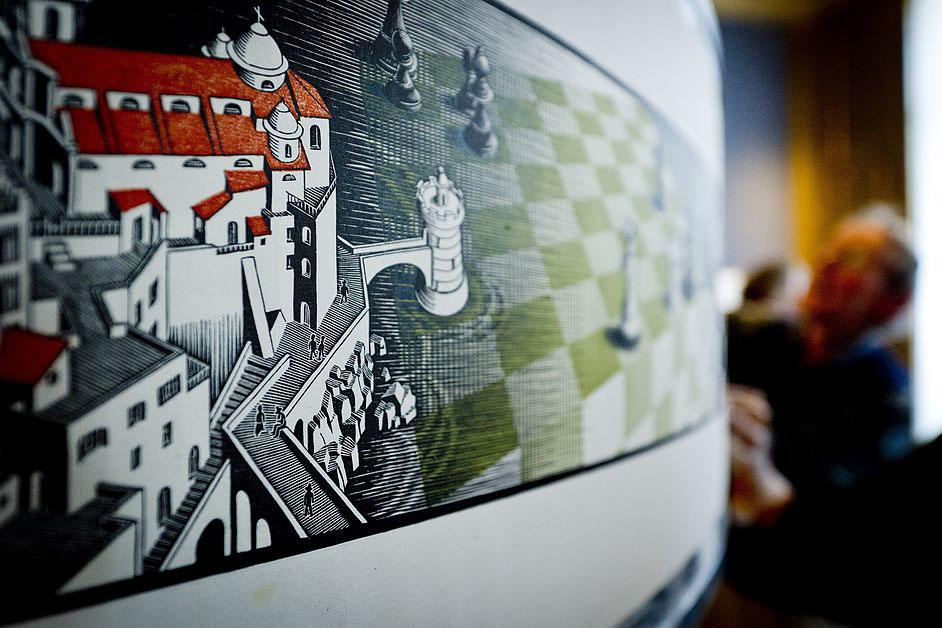Alexa Meade is an American multimedia artist renowned for her technique of painting on the human body and three-dimensional spaces to create the illusion of two-dimensional art. Her work has been exhibited around the world at the Grand Palais in Paris, the United Nations in New York, the Smithsonian National Portrait Gallery in Washington, DC, and Shibuya Crossing in Tokyo.
Since her work first went viral in 2010, Meade has a fervent following on social media, where she recently announced her first NFT, or non-fungible token, auction (beginning 1 p.m. EST on April 9th, 2021). Below, she discusses her early struggles with selling art, creating video artwork out of her groundbreaking shoots, and entering the NFT space. Her story appears as told to Charles Thorp, and has been edited and condensed for clarity.
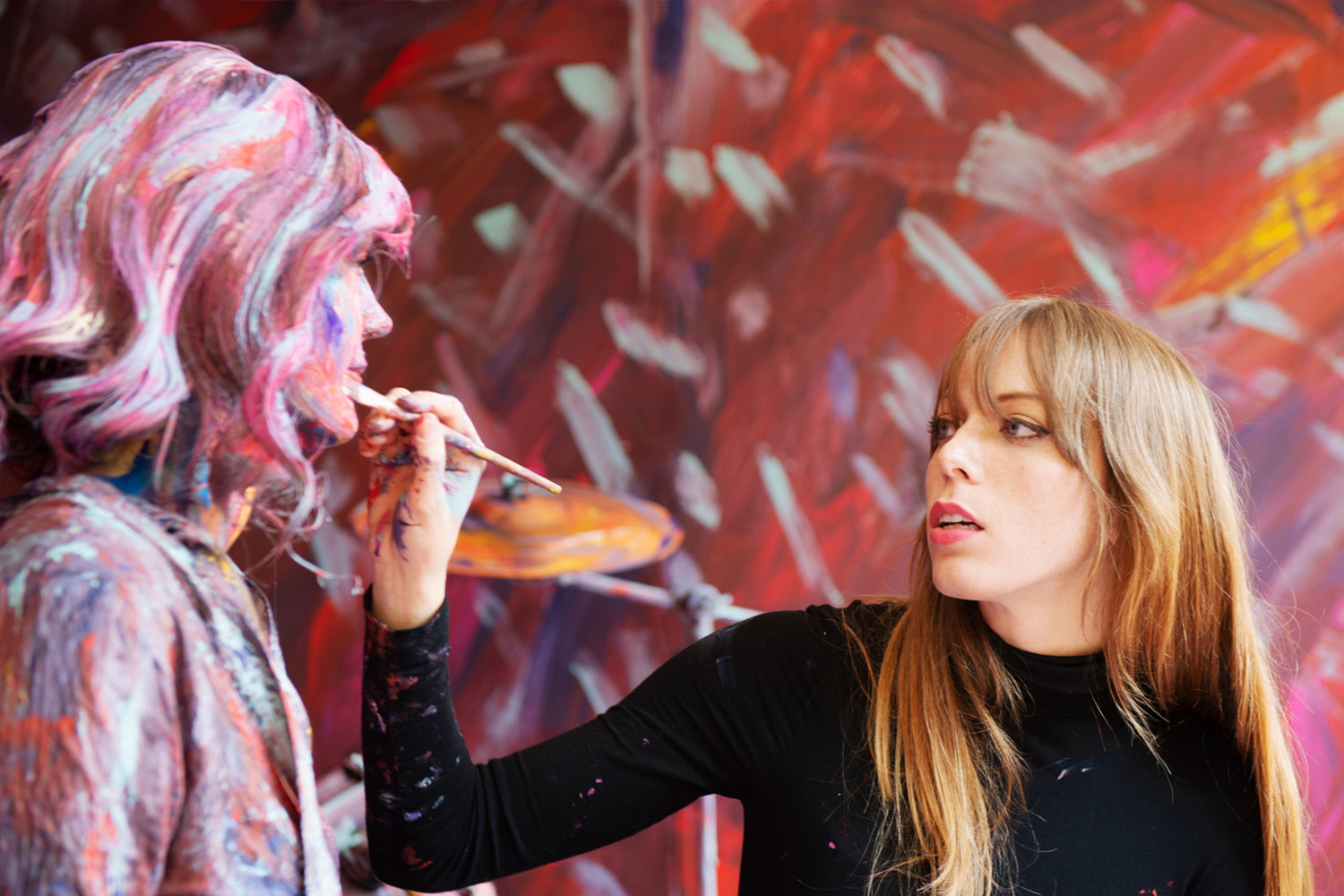
I started painting on people — then turning them into living portraits — back in 2009. The first photo I took of a person I had used black to paint in the shadows on, I thought that my camera had broken, because it looked so much like a 2D image. I remember excitedly approaching my sculpture professor between classes and he was not impressed.
I can still picture my professor, eating a bowl of chili, seemingly annoyed that I was bothering him. First he thought that I had painted onto a photo, and next he thought it was something that I done in Adobe Photoshop. When he finally understood what I had done, he said since it looked like it could have been done in Photoshop, he didn’t get the extra effort.
Luckily that did not stop me. I kept experimenting with painting to manipulate the perception of light in shadow to erase spatial depth cues. More and more I had 3D shapes that were truly appearing as if they were two-dimensional. I started to use colors, finding that as long as I captured the shadows just right, then I could use any of the crayons in the box.
The first piece that I ever actually sold was a self portrait, after it had gone viral on the website kottke.org. The offer came over the internet, and the idea that someone actually wanted to purchase a piece they had only seen as a jpeg was very novel. I was excited, but I was also walking on eggshells after dealing with early skepticisms. In my head, I wondered if it would be the only piece of art I ever sell.
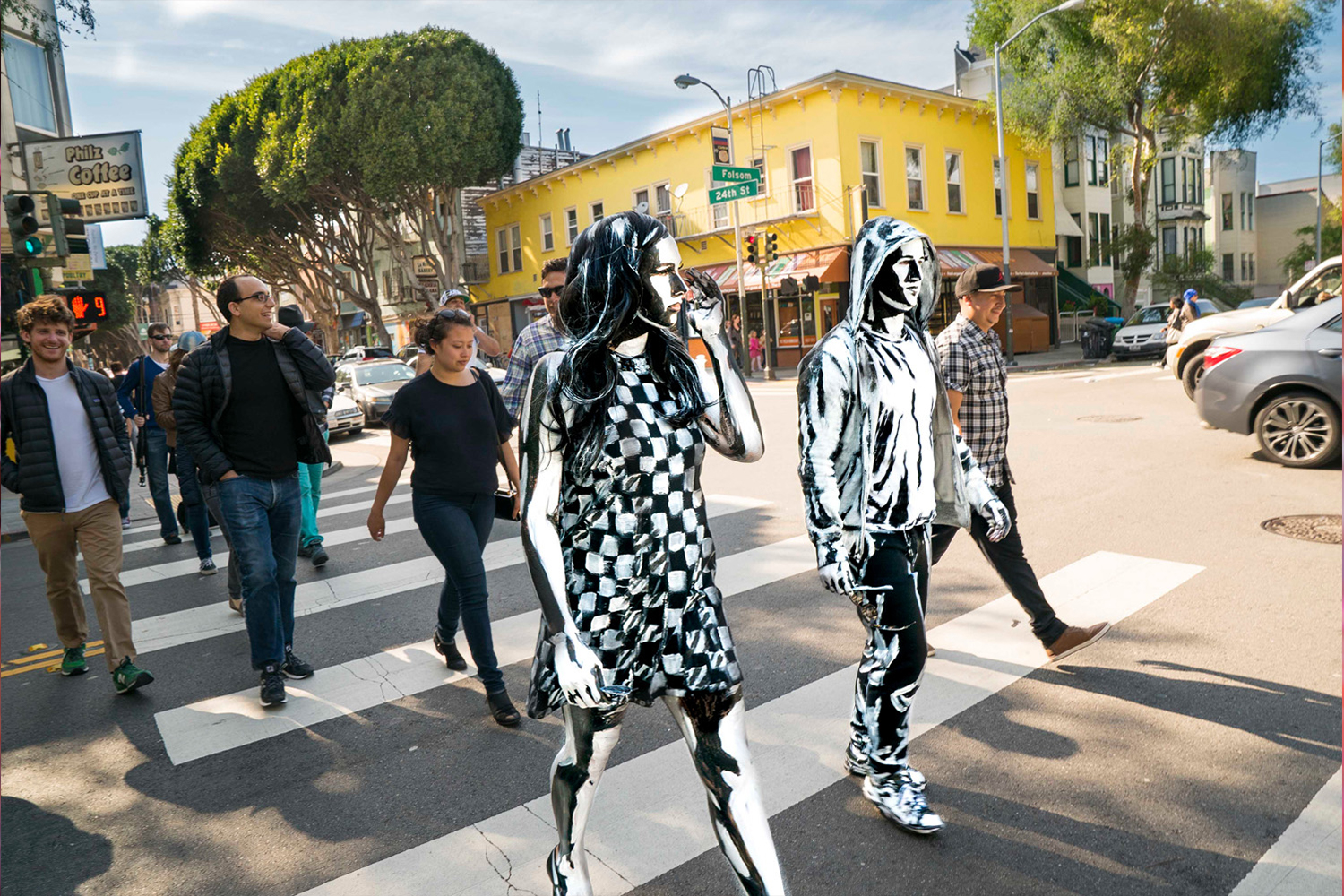
Doing my own sales during those early days in my career proved stressful. There were questions that kept me up all night, like who was going to cover the shipping or if the buyer’s check was going to clear. I have even had to deal with scam artists who tried to trick me into shipping my art before the payment came.
And it didn’t get any easier when I first started working with galleries. I thought that being in a relationship with one would further establish my work, and help me deal with my imposter syndrome. But instead I found it to be a predatory situation, where they were taking a 50-percent cut with every transaction and bringing very little to the table.
Over time I realized that all of the buyers were discovering my work online, and my work being shown at the gallery was doing virtually nothing. By the time I tried to leave, there were all of these contractual issues that made it difficult, which became incredibly restrictive in my career. Since then I have found that many artists just accept the gallery system as it is, and the fees they charge, purely because they don’t see another way.
That is one of the exciting elements of NFTs: being able to keep those kinds of people out of the art-selling process. I have been interested in the blockchain space for years, and first heard about non-fungible tokens in late 2019. I thought it was interesting at the time, but perhaps didn’t have enough momentum to make sense for me yet.
My mind was changed when my mother emailed me the NY Times article about the Beeple sale. That’s when I realized that it was time, and perhaps I should have even jumped in a little earlier. Over my career, the way that collectors have been able to acquire my work is through limited-edition photo prints. [My preferred medium] is real-life people, and while the end result might be captivating, a static image doesn’t really capture the real-life dynamics of a human being.
That inspired me to make my initial collection out of video-art pieces rather than still images. I was able to create original and new works out of footage that I had from previous shoots. I am excited there is a new way for people to collect living paintings and have that palpably showing through, with the slight movements in the video, or the look of the eyes glimpsing at you.
The NFT community has been coalescing around Twitter, so I decided it was important that I announce my auction there first. After that I let everyone else know by posting it on Instagram, sending out a newsletter and making calls to friends in the community. I was expecting to get a mixed response, and I was bracing myself for criticism. I was concerned that people would find this NFT space not serious enough, and it would hurt my career as a fine artist.
But I have been surprised by the overwhelming support by everyone. There have been a lot of people who have said they can’t wait to put in a bid — people who have never bid on my more traditional works. For this collection I decided to sell five video-art pieces which are 10 to 30 seconds long and designed to play on a loop. Four of them are built out of previous shoots, where I used footage that was collected to create original video art.
There is one piece included in the show that has never been seen before, a collaboration with model Alli Harvard. We created it within the last few weeks at my home in Los Angeles. I painted on her in stark black and white. Then my videographer Mike Monaghan shot her on video while putting prisms and crystals in front of the camera lens. The result was these beautiful flares of light and this psychedelic overlay that really makes the painting feel like it is switching between dimensions.
This goes beyond pointing a video camera at one of my pieces at the end of the process. This is a moving medium. I see NFTs as a place for art that previously did not have a home in a traditional collectible format. I’m not including any still-art images in this auction because those pieces have a home in art galleries. They have been printed and hung up on walls. I am more intrigued by the digitally native art, like video, that goes beyond simple documentation.
I know these pieces will look great hanging on a wall, perhaps on a digital screen, moving. There are a lot of new display technologies that are coming online now that will make showcasing even better. How these pieces are shown or not shown will be up to the buyers. If they want my input, though, I am more than happy to advise.
This article appeared in an InsideHook newsletter. Sign up for free to get more on travel, wellness, style, drinking, and culture.
